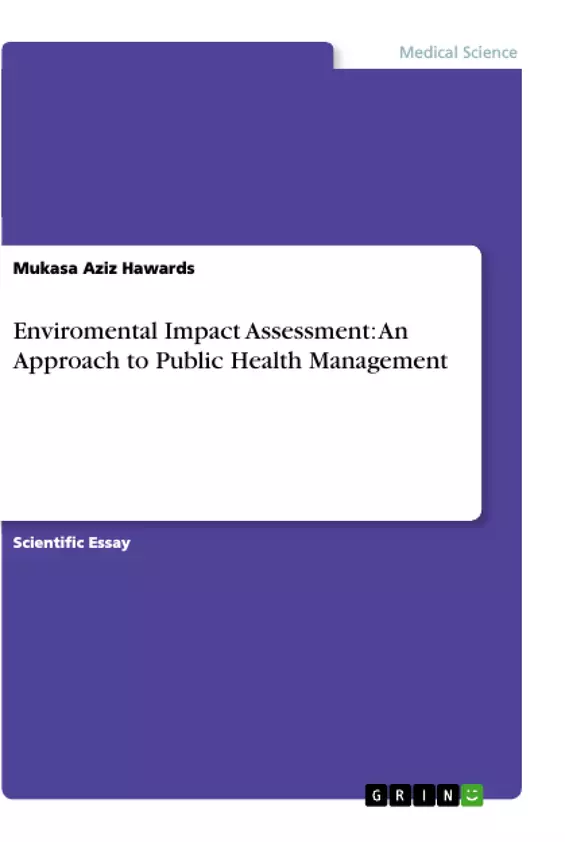Our environment is a key defining factor that can be used to establish and to predict the health status, economic progress and downfall, social and economic development, human interactions and quality of regulation and policies operating in the given community or at the national level.
Though environments may vary from one to another in terms of health status, bio-diversity, pollution, and extent of exploitation by human activities, economic value but yet in even when these factors are present all environments share a fundamental feature which is their ability to support life and hence they provide reliance for man’s natural existence.
Though science and technological advancements are changing the trends in environmental support and reliance to man’s existence, yet all these inventions are always aimed at devising means of increasing and boosting the support of the environment towards man and for his well being. Any threats and endangering of the human environment both to the biotic and a biotic components does not actually exert its effect on the environment itself but rather onto those that are supported by it. The concept or idea is that the environment only exists for our good and t no time or extent has the environment turned negatively impacting to man unless destabilized by man himself.
This idea therefore, is elaborate of the implications of man to the environment and not that of the environment because it is man who is supported first or in other words human existence emerges from the environment. Science has it well explained through the topic of ecology that for an efficient and reliable Eco-system to exist, both man and the environment must exert a positive impact to each other to a particular extent. This is because the Eco-system is made up of biotic interrelations namely; food webs, food chains, and energy flow cycles.
This study is a scope therefore, into these environmental dynamics and its relevance to health is vital not in mere theoretical approaches but more so in the general practice for every person but we are all stake holders when it comes to environmental; protection, dependency and reliance. Achieving a positive human environment that is supportive in all spheres of man’s involvement and enjoyment there is need to analyze the state or status of the environmental exploitation and degradation and responsible use of it at an international scale.
This study presents research outcomes and revised approaches that can be applied in as
Inhaltsverzeichnis (Table of Contents)
- Introduction to Biodiversity and Eco-Systems
- Environmental Impacts on the Eco-Systems
- Principles and Fundamentals in Environmental Impact Assessment
- Policy Implications and the Institutional Framework in EIA
- Final Overview: Recommendations and Conclusion
Zielsetzung und Themenschwerpunkte (Objectives and Key Themes)
This course in environmental impact assessment aims to provide a comprehensive understanding of the factors influencing environmental stability and instability, and the methods for assessing their impacts. The course equips students with the ability to identify, develop, and implement effective solutions to environmental challenges, particularly in an international context. The key themes explored in this course include:- Understanding the interrelationship between biodiversity and ecosystems.
- Analyzing the impacts of human activities on the environment and the subsequent effects on human health.
- Examining the principles and methodologies of environmental impact assessment.
- Exploring the role of policy and institutional frameworks in environmental management.
- Identifying strategies for sustainable development and environmental protection.
Zusammenfassung der Kapitel (Chapter Summaries)
Introduction to Biodiversity and Eco-Systems
This chapter introduces the concept of biodiversity and its significance in the context of the natural environment. It examines the various kingdoms of living organisms, including prokaryotes, protists, fungi, plants, and animals, highlighting their roles in ecosystems.Environmental Impacts on the Eco-Systems
This chapter explores the diverse impacts of human activities on ecosystems, including pollution, deforestation, habitat destruction, and climate change. It analyzes the consequences of these impacts on biodiversity, ecosystem services, and human well-being.Principles and Fundamentals in Environmental Impact Assessment
This chapter delves into the principles and methodologies used in environmental impact assessment (EIA). It outlines the steps involved in conducting an EIA, including scoping, baseline data collection, impact prediction, mitigation measures, and monitoring.Policy Implications and the Institutional Framework in EIA
This chapter examines the role of policy and institutional frameworks in guiding and implementing EIA processes. It explores the legal and regulatory aspects of EIA, as well as the involvement of stakeholders and public participation in environmental decision-making.Schlüsselwörter (Keywords)
This course focuses on the key concepts of environmental impact assessment, biodiversity, ecosystems, pollution, climate change, sustainable development, policy, and institutional frameworks. It emphasizes the interconnectedness between human activities, environmental impacts, and the well-being of ecosystems and human populations.- Quote paper
- Mukasa Aziz Hawards (Author), 2013, Enviromental Impact Assessment: An Approach to Public Health Management, Munich, GRIN Verlag, https://www.grin.com/document/233347



